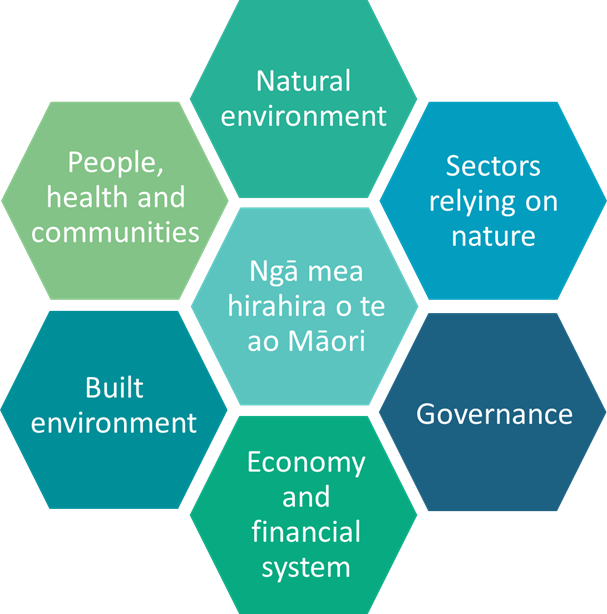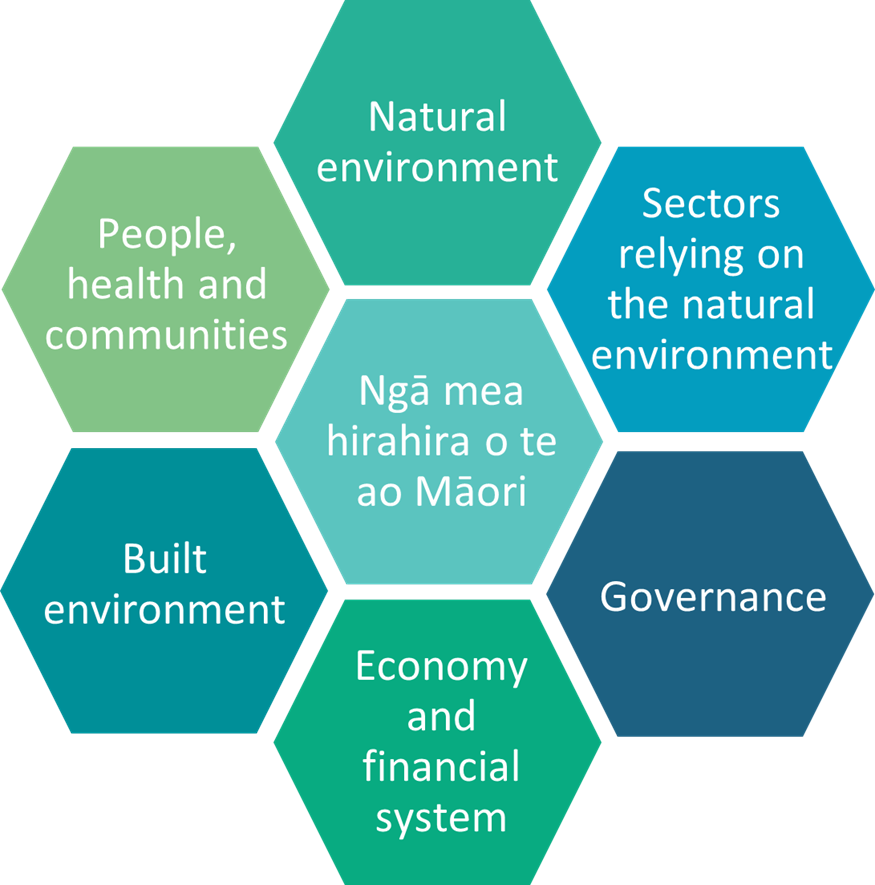2026 National climate change risk assessment
About this project
Every six years, the Commission will produce a report that provides a national picture of how Aotearoa New Zealand may be affected by climate change-related hazards.
We are currently working on the 2026 national climate change risk assessment, which will be the first one produced by the Commission.
Read more about our work on national climate change risk assessments.
Project progress
November 2024 – March 2025: Call for evidence.
Read more on our consultation platform.
April – November 2025: Draft risk analysis and draft risk scores (both with expert review)
Read more about our expert review groups
Next steps:
Finalise advice (late 2025)
Drafting and production (early 2026)
Report delivery to the Minister planned for mid-April 2026
About this risk assessment
A core part of the Commission's role is to independently assess the risks that Aotearoa New Zealand faces from the current and future effects of climate change.
These include risks to the natural environment, economy and financial systems, built environment, and other domains.
The 2026 national climate change risk assessment will identify the most significant risks to Aotearoa New Zealand’s economy, society, environment, and ecology. We will assess the nature of the risks, their severity, and the need for coordinated actions to respond to them. This will help inform the government's next national adaptation plan, expected in 2028.

Natural environment
The natural environment domain includes all aspects of the natural environment that support the full range of our indigenous species, he kura taiao – living treasures, and the ecosystems they form in terrestrial, freshwater and marine environments.
There are strong links between the natural environment and other domains – particularly the Māori; people and communities; and economic sectors that rely on the natural environment domains. This mean that impacts on New Zealand’s natural environment have cascading impacts in other domains.
Key risks to the natural environment:
- Coastal ecosystems
- Freshwater ecosystems
- Terrestrial ecosystems
- Indigenous biodiversity risks from invasive species and pathogens
Built environment – buildings, urban spaces and infrastructure
The built environment domain refers to the set and configuration of buildings, urban spaces and infrastructure. This also includes energy, three waters (drinking, storm and waste), waste management and flood management assets and infrastructure.
Impacts on Aotearoa New Zealand’s built environment have flow on effects for other domains, particularly the people and communities domain and economy domain.
Key risks to the built environment:
- Potable water supplies and wastewater and stormwater systems
- Buildings
- Waste management infrastructure
- Ports and airports
- Linear transport networks
- Electricity and telecommunications infrastructure
- Electricity supply
Economy and financial system
The economy domain considers production, distribution, trade and consumption of goods and services, economic costs, and finance and insurance markets – essentially, what happens to and within the economy affects people and their livelihoods.
Key risks to the economy and financial system:
- Central and local government funding
- Stability of the financial system
- Insurability of assets
- Functioning of supply chains
Governance
Governing architecture and processes of interaction and decision-making that exist in and between governments, economic and social institutions. Governance extends through all aspects of Aotearoa New Zealand, from the Treaty partnership between Māori and the Government (the Crown) to the relationship between local government and communities, and across the economy, built environment and natural ecosystems.
Key risks to governance:
- Regulatory certainty and strategic and enduring governance
- Fragmented institutional arrangements and capacity constraints
- Ability of democratic institutions to follow due democratic decision-making processes
- Ability to uphold Te Tiriti o Waitangi / Treaty of Waitangi
People, health and communities
This domain encompasses people’s identity, health, sense of community and social norms, and cultural values and traditions. This domain has particular links to the natural environment domain, built environment domain, economy domain, and Māori domain.
Key risks to people, health and communities:
- Social cohesion, community and cultural wellbeing
- Physical health
- Mental health
- Ability of emergency management system to respond
- Social infrastructure and community services
Sectors relying on the natural environment
For sectors whose economic productivity is directly linked to the natural environment, and so will experience more direct impacts of climate change than other sectors of Aotearoa New Zealand’s economy. This includes the primary industries (livestock agriculture, horticulture, fisheries and forestry), tourism, and energy. The primary industries and tourism make up a large portion of Aotearoa New Zealand’s economy. This domain has particular links to the natural environment domain, the Māori domain, and the economy domain.
Key risks to sectors relying on the natural environment:
- Livestock agriculture
- Horticulture
- Forestry
- Tourism
- Fisheries
Ngā mea hirahira o te ao Māori | Things of importance in te ao Māori
This domain considers Māori interests and investments, health and wellbeing, culture and practices. It links with all other domains.
For the 2026 NCCRA, the assessment for this domain is being conducted by an external provider.
Key risks to ngā mea hirahira o te ao Māori:
- Māori health vulnerabilities
- Access to tangoa species
- Māori infrastructure
- Māori primary industries
- Tikanga and hapū/iwi identity
- Indigenous knowledge systems
- Legal exclusion and governance for Māori
- Increased health vulnerabilities
